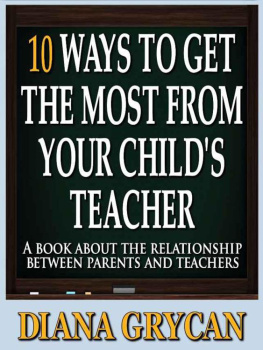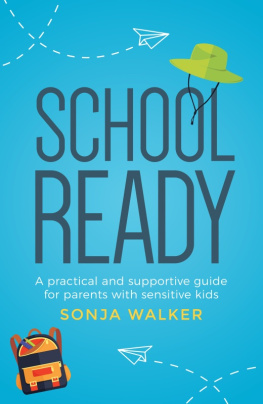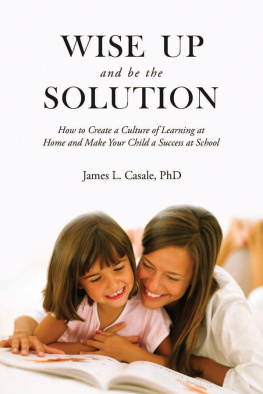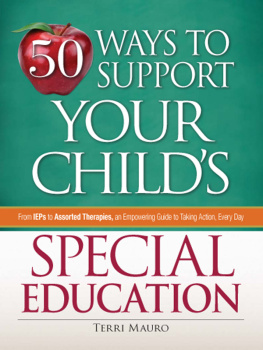TEN WAYS TO GET THE MOST FROM YOUR CHILD'S TEACHER
(A book about the relationship between parents and teachers)
By Diana Grycan

Digital Edition published by Crossroad Press
2012 / Diana Grycan
Cover Design By: David Dodd
LICENSE NOTES
This eBook is licensed for your personal enjoyment only. This eBook may not be re-sold or given away to other people. If you would like to share this book with another person, please purchase an additional copy for each person you share it with. If you're reading this book and did not purchase it, or it was not purchased for your use only, then you should return to the vendor of your choice and purchase your own copy. Thank you for respecting the hard work of this author.
Meet the Author

Diana Grycan brings her forty years of educational experience to light in this book about the relationship between parents and teachers. Besides working as a classroom teacher and curriculum coordinator for twenty-seven years in an elementary school in West Los Angeles , Diana has given many workshops for teachers and parents, as well as speaking at national teaching conventions. Diana also has taught a class at UCLA Extension. She lives in Los Angeles with her husband, Bob, and is mother to a grown son, Michael, and grown daughter, Jenna, who have blessed her with six grandchildren.
The author can be contacted at:
d iana. g rycan@ aol.com
Twitter: 10Waystogetthemostfromyourchildsteacher ( HTTPS://Twitter.com/DianaGrycan )
WordPress.com (blog) Tenwaystogetthemostfromyourchildsteacher
Facebook Fan Page- 10Waystogetthemostfromyourchildsteacher
Buy Direct From Crossroad Press & Save
Try any title from CROSSROAD PRESS use the Coupon Code FIRSTBOOK for a one-time 20% savings! We have a wide variety of eBook and Audiobook titles available.
Find us at:
http://store.crossroadpress.com
Subscribe to our Newsletter:
News & Updates
Visit our blogs for updated news and information:
Print and digital books
Audiobooks
You can also find us on Facebook .
Table of Contents
Foreword
Much education today is monumentally ineffective. All too often we are giving young people cut flowers when we should be teaching them to grow their own plants.
John W. Gardner
S ince this is my fifth year of retirement, I have decided that it is time to write about the thoughts that daily inhabit my mind. These ideas are about the interactions with many parents that I have met during my teaching career. There are so many anecdotes to share, but my purpose in writing this is to help parents get the most out of their relationship with their childs teacher.
I will mention some easily recognizable names when they are stories about great parents, and I will not name those whose actions have been less than productive. All of those who are mentioned, however, should give you some insight into dealing with that person on the other side of the desk.
This is not a book about how to parent your child, nor will it give you formulas on helping your child to succeed. It is about the relationship that you form as a parent with your childs teacher. It is about the relationship that permeates your entire school experience. It is the modeling of your actions that molds your childs perspective by the way in which you conduct yourself.
I n 1980 my son was eleven and my daughter was seven. Bussing had just begun and I was in the midst of a divorce. My initial objective in moving to our neighborhood five years earlier was that my children could walk to the public elementary school. We lived only three tenths of a mile away from the school, and life was very busy. I substituted at the school about two or three days a week.
My biggest problem was that my childrens father left the state with no intention of being a responsible parent, and I had to find a way to support my family. To make matters worse, the school informed me that my sons fourth grade class was going to be bussed to a school that was an hours bus ride each way. (My son showed his natural athletic ability early on, and sitting still for long periods of time was not something that was easy for him.) When I inquired about reading percentiles at the school, I was told that he would be bussed to a school that had a national reading percentile of 35%. Any parent, an educator or not, would have balked at that statistic, and I panicked.
It appeared that the universe was telling me to do something fast, so I decided to use my life-teaching credential to apply for a full-time job. This was in May, and many of the schools had already hired their teachers for the next year. I was offered jobs by a good number of them, but the one I fell in love with was a private school that reminded me philosophically of Chadwick School which I had attended for twelve years. It offered a child-centered education with an emphasis on the arts and sciences, and they cared deeply about the social and emotional growth of children. This was now an increasingly important factor for me as a single parent.
I knew my job would be a package deal, and I was excited with the possibilities of the three of us growing up together in this kind of supportive environment. The only grade level opening at the school was in kindergarten, so I grabbed the opportunity and began a twenty-seven year relationship with a wonderful community. I was surprised to find that the school was filled with the same types of families that I had encountered at Chadwick. At Chadwick I had gone to school with the children of Ronald Reagan, Dean Martin, Art Linkletter, Yul Brenner, Judy Garland, George Burns, Gracie Allen and Joan Crawford. Well-known personalities did not particularly impress me as being any different than anyone else, because no one was really aware that they were more privileged than anyone else. Expectations were the same for everyone. What did leave an impression on me many years later, as I assumed the role of the teacher, was the difference I found in the attitudes of parents towards the teachers role in the classroom.
That is what this book is about: helping parents approach and support their childs teacher in a healthy manner while creating coinciding goals.
Chapter One:
The No Accountability Parent
Character is doing the right thing when nobodys looking. There are too many people who think that the only thing thats right is to get by, and the only thing thats wrong is to get caught.
J.C. Watts
S hortly after I began my new journey into single parenthood and teaching, I noticed a little girl, whom I will call Janet, displaying some strange behavior. At the ripe old age of five, I would catch her pinching other children and then smiling when the other child began to cry. I discussed this with the principal, who told me to keep a close eye on Janet and to document what I witnessed. I also noticed that Janet appeared to be focusing on the lessons given, but she was not able to answer any directed questions afterwards. After trying, with no success, to reason with Janet about the importance of keeping her hands to herself so that others could not be hurt, I felt that it was time to have a parent-teacher conference. She always said she was sorry, but her behavior remained the same.
Her mother, a plain but pleasant woman, arrived dutifully on time to discuss her child with me. I noticed that she had difficulty making eye-contact with me as she spoke, which I attributed to nervousness. She described Janet as a compliant child at home, and further told me that she had never had the slightest problem with her daughters behavior. She suggested that perhaps Janet needed more socializing since she was an only child. I listened carefully and mentioned that if her aggressive behavior and her ability to stay on task did not improve by the winter break, it would be a good idea to have her tested. Her mother seemed to disregard my comments as foolish, but she was bright enough to pretend that she agreed. When the holidays came, the principal and I met with Janets mother. We offered her a choice of educational therapists who could administer some necessary tests. The results of the tests would give us recommendations as how to help Janet function more positively in the classroom. Her mother assured us that she knew someone who would do the testing at less of a cost, so we agreed that would be acceptable.











